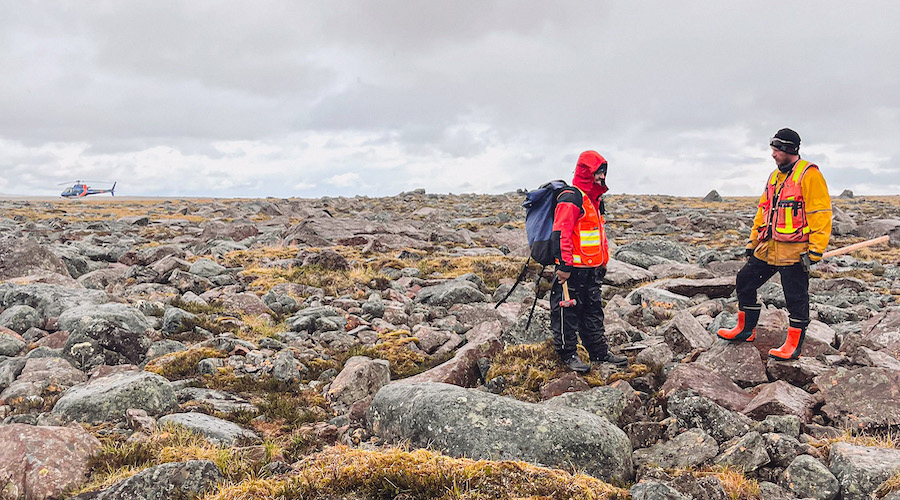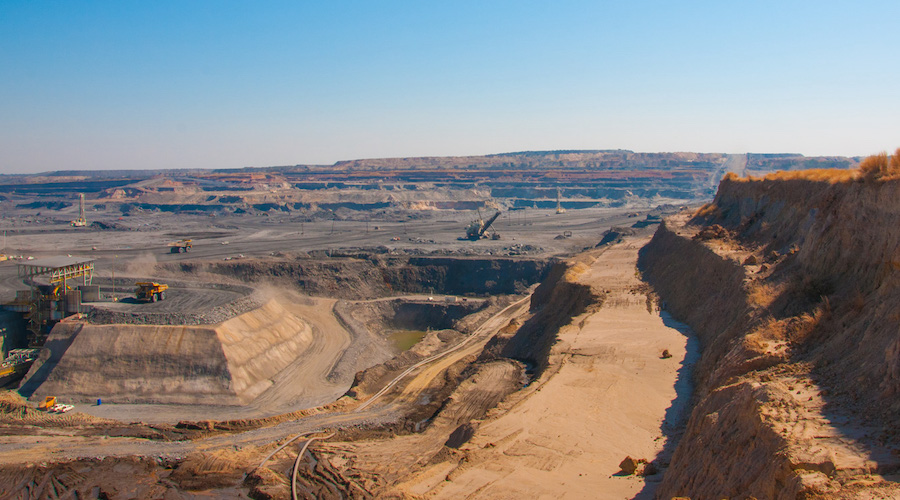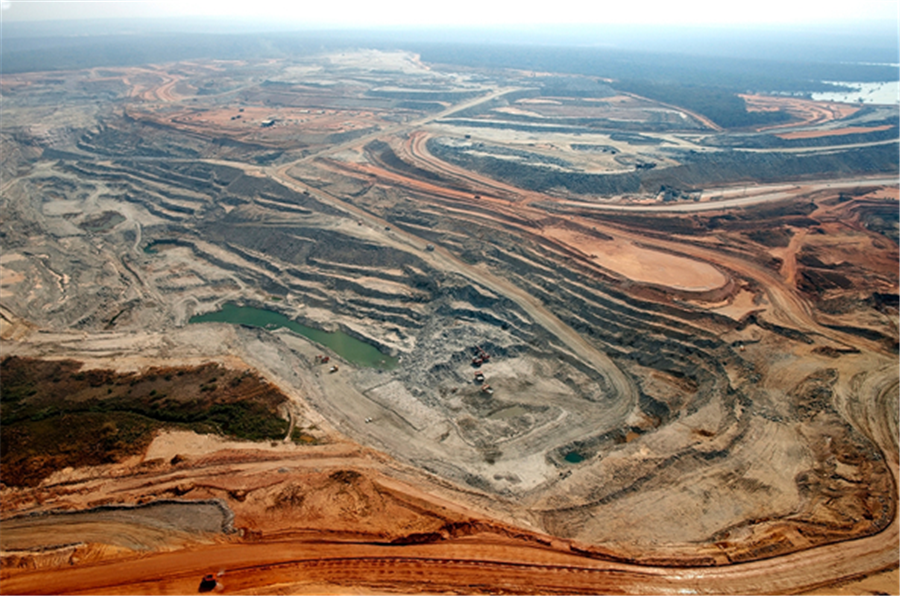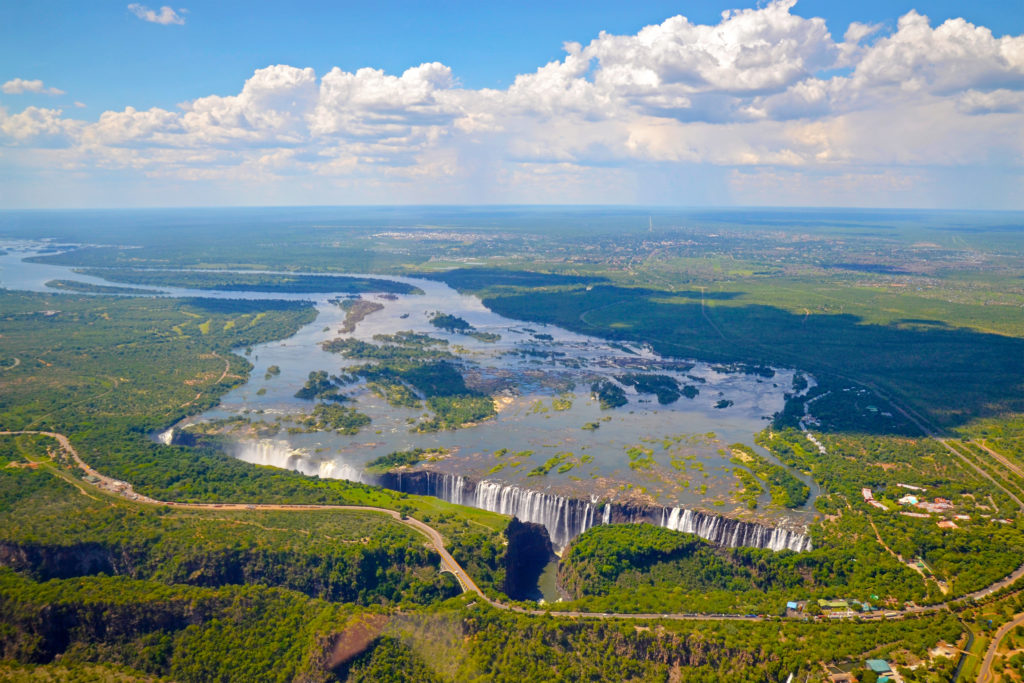Cecilia Jamasmie | February 5, 2024 |

KoBold Metals is involved in nearly 60 explorations projects across three continents. (Image courtesy of KoBold Metals.)
KoBold Metals, backed by a coalition of billionaires including Bill Gates and Jeff Bezos, said on Monday its Mingomba asset in Zambia is the country’s largest copper deposit in a century and that it plans to fast-track its development.

The California-based startup has been drilling at its Zambian permit for a little over a year. During this time, KoBold president Josh Goldman said they have confirmed the “huge” size of the deposit.
Mingomba is shaping up to be “extraordinary,” he said, adding that the potential of the discovery compares to that of the Kamoa-Kakula mine, owned by Ivanhoe Mines and China’s Zijin Mining. This operation, located just across the border in the Democratic Republic of Congo (DRC), produced almost 400,000 tonnes of copper last year.
“The story with Mingomba is that it’s like Kakula in both the size and the grade,” Goldman said on the sidelines of Indaba mining conference in South Africa, according to Bloomberg. “It’s going to be one of the highest grade, large underground mines.”
KoBold bought into the project in 2022, via a joint venture with its existing owners – Australian private equity firm EMR Capital and Zambia’s state-owned mining investment vehicle ZCCM-IH (LON: ZCC).
KoBold still plans to have the $2 billion underground copper mine in Zambia built within the decade, with first production in the early 2030s, but it needs to update resource estimate and complete feasibility studies before it makes the decision to go ahead.
Goldman is not worried about securing capital. “The issue globally, is not a lack of availability of capital. It is a lack of availability of high quality projects and where there are returns, there is capital,” he said. “For a great project, there will be capital.”
If built, the Mingomba project would align with the vision of Zambia’s President Hakainde Hichilema to increase the nation’s copper production to three million tonnes by 2032 to help the country reduce its debt burden.
From Canada to the world
The company is not just focused on copper, but rather all minerals and metals considered critical for the energy transition.
It began its quest for battery metals began three years ago in Canada, after it acquired rights to the area in northern Quebec, just south of Glencore’s Raglan nickel mine, where it detected lithium.
The start-up now has about a dozen exploration properties in places including Zambia, Namibia, DRC, Quebec, Saskatchewan, Ontario, and Western Australia, which have resulted from joint ventures with BHP (ASX: BHP) and with BlueJay Mining (LON: JAY) to explore for minerals in Greenland.
It also has exploration activities underway in South Korea and the United States and, in December, it launched a four-continent search for lithium deposits.
Using artificial intelligence, Kobold aims to create a “Google Maps” of the Earth’s crust, with a special focus on finding copper, cobalt, nickel and lithium deposits.
It collects and analyzes multiple streams of data — from old drilling results to satellite imagery — to better understand where new deposits might be found.
Algorithms applied to the data collected determine the geological patterns that indicate a potential deposit of cobalt, which occurs naturally alongside nickel and copper.
The technology, KoBold said, can locate resources that may have eluded more traditional geologists and can help miners decide where to acquire land and drill.
Goldman noted the company was considering going public in the next three or four years.
Silicon Valley Startup Claims Massive Copper Discovery in Africa
- Kobold Metals uses artificial intelligence to explore the Earth’s crust to find metals and critical minerals for the energy transition.
- KoBold Metals has announced what it says is a huge copper deposit discovery in Zambia.
- A spokesperson for the California company told CNBC this week that the project “will be one of the world’s biggest high-grade large copper mines.
A Silicon Valley firm dubbed KoBold Metals has announced what it says is a huge copper deposit discovery in Zambia—one of the biggest producers of the metal in Africa.
Kobold Metals uses artificial intelligence to explore the Earth’s crust to find metals and critical minerals for the energy transition. The company has the financial backing of Jeff Bezos and Bill Gates, as well as Richard Branson and Ray Dalio, among others.
Per its own website, Kobold Metals aims to accelerate the “clean energy future” by securing the metals and minerals that this future will need in significant quantities. It does that by using AI to explore for these metals and minerals.
It now appears that this use of AI has paid off in the Mingomba project in northern Zambia—near the border with the Democratic Republic of Congo, on whose other side sits the Kamoa-Kakula copper mine, one of the largest in the world.
A spokesperson for the California company told CNBC this week that the project “will be one of the world’s biggest high-grade large copper mines.” It is indeed a timely discovery since the energy transition essentially rides on copper, and new mine openings are a rare occurrence these days.
KoBold started making plans for the Mingomba project last year before it confirmed the scale of the deposit. Reuters reported in September, citing company executives, that KoBold planned to put $150 million into speeding up the exploration work on the project. The rush was motivated by the urgent demand for more copper.
Indeed, there have been a lot of warnings from the mining industry and energy analysts that a copper shortage could interfere with the planned pace of the energy transition. This has added to worries that the targets set out by various countries will remain elusive despite the amount of effort invested into pro-transition regulation and attempts at eliminating competing technologies via ICE car bans and gas boilers.
Yet despite these warnings, ramping up the global output of the basic metal has been challenging for several reasons. One is that a new mine takes a lot of upfront investments, and somebody has to come up with it. To come up with it, investors need to be sure there will be a return on this investment, and miners have become extremely cautious when it comes to such investments—because copper prices do not justify them.
This is the paradox of the copper market right now. Everyone seems to believe that a shortage is looming as demand skyrockets, with millions of EVs envisioned on roads and millions of wind and solar farms covering the planet’s surface. But copper prices don’t follow these visions—they follow economic indicators that could point traders to where the global economy is going. And those indicators are not flashing green right now, it seems.
There is also the problem of forecasts versus reality. It is true that EV sales are rising, but they are rising nowhere near fast enough for the forecasters that saw them going mainstream years ago. What’s more, EV makers are scaling back their manufacturing plans on weakening demand. That’s not exactly motivating for miners.
This appears to be the reason why KoBold Metals is using private capital to finance its exploration and development work in Zambia. The company said soon after its discovery announcement that it might look for partners to shoulder the $2-billion financial burden of turning the Mingomba discovery into a producing mine. This, according to the company, should take about a decade—highlighting one of the insurmountable obstacles along the way of higher copper supply.
Copper mines are not shale wells. They cannot start producing a few months after breaking ground. Copper—and all other—mines take years to turn into a production facility. Perhaps all those upbeat transition forecasters should have factored this into their forecast for a more comprehensive, realistic picture of the transition.
By Irina Slav for Oilprice.com
Reuters | February 6, 2024

The Sentinel open-pit copper mine in Zambia.
Zambia is keen to negotiate larger holdings in new mining projects in order to raise its revenue and boost spending by investors on social projects, mines minister Paul Kabuswe said.

The push by Lusaka through state-owned ZCCM-IH would apply to future agreements, but does not include existing mines and should not unnerve investors, Kabuswe told Reuters.
Zambia is Africa’s second-largest copper producer after neighbouring Democratic Republic of Congo and ZCCM has interests of 10% to 20% in mines including those owned by Barrick Gold, Vedanta Resources and First Quantum Minerals.
ZCCM sold a 51% stake in Mopani Copper Mines to a unit of United Arab Emirates’ International Holding Company, retaining the remainder, which previously belonged to Glencore.
“Stakes in new tenements will actually be moulded around such kind of partnerships,” Kabuswe said in an interview on Tuesday on the sidelines of the Africa Mining Indaba.
“We want to make sure that there is win-win, that there is no slave-master relationship and we also want to make sure that there’s social impact,” he added.
While Zambia’s government has set a copper production target of about 3 million metric tons within a decade, output has been declining gradually due to challenges at some operations including Mopani and Konkola Copper Mines.
“We are going to be very strong in negotiations,” Kabuswe said. “But not too strong to the extent of scaring away potential investors.”
Lusaka also plans to start buying minerals such as copper from projects it has stakes in to trade on its own, he said.
While the details of establishing a trading house are still to be worked out, a special purpose vehicle had been approved by the Zambian cabinet, Kabuswe said.
The Zambian government is also closely following developments on First Quantum’s Panama mine and hopes the challenges the Canadian miner is facing are resolved.
First Quantum has not informed the government of any plans to sell or bring in a strategic investor, he added.
“We are looking closely,” Kabuswe said. “But looking closely not in a negative sense, but hoping that things around them can be resolved so that it doesn’t affect ourselves.”
(By Felix Njini and Veronica Brown; Editing by Alexander Smith)
Bloomberg News | February 5, 2024 |

Lumwana is located in Zambia’s Northwestern Province.
Zambia plans to directly buy and sell a portion of the copper produced in the southern African nation, competing with trading giants including Mercuria Energy Group Ltd. and Glencore Plc.

“We obviously want to do it in a way that’s fair, that’s commercially suitable for the mining companies,” Jito Kayumba, President Hakainde Hichilema’s senior economic adviser, said in an interview on Monday. “To say that we can come as a commercial player to compete with the other commodity traders, to make financing available for the mines for us to have a fair share of the resource.”
Zambia joins neighbors including Botswana and Democratic Republic of Congo in trying to secure greater economic benefits from its mineral wealth through getting access to the commodities to sell directly to buyers. While the government has shareholdings in some mines, it’s argued for decades that state revenues from them are too low.
Companies including First Quantum Minerals Ltd. and Barrick Gold Corp. operate mines in Zambia, Africa’s second-biggest copper producer.
The government could start with a limited amount of about $100 million and build its trading business, Kayumba said at the Investing in African Mining Indaba conference in Cape Town. It could have legislation ready in the next three to six months, he said, adding the government may opt to receive physical metals instead of royalties from some mines.
“We’ve reached the point where we have to be disruptive. Our benefits from the sector has been quite minimal,” Kayumba said. “There’s a lot of financial engineering, call it creative accounting — transfer pricing reduces our chances of getting a good dividend.”
The government will hire the necessary expertise to start trading its copper, and shouldn’t struggle to compete as it has direct access to the resources, according to Kayumba. The move will open a window into the financial world of commodity trading and help the government see how much profit from its copper remains abroad — some of it in countries like Switzerland, where commodity traders including Glencore are based, he said.
“It gives us transparency,” Kayumba said. “We’ll see ‘Ah! That’s what happened in Switzerland’.”
The European country accounts for about 46% of Zambian export earnings, according to official data.
(By Matthew Hill)
Reuters | February 5, 2024 |

Aerial view of Victoria falls, Zambia. Stock image.
Anglo American is in the early stages of exploring for copper and cobalt in Zambia’s North-Western province, its chief executive officer Duncan Wanblad said on Monday.

“Zambia’s mining sector appears to be on track for renewed activity – and that is good for Zambia and African mining,” Wanblad told delegates at the African Mining Indaba in Cape Town.
“I am pleased that we are progressing with early-stage exploration in Zambia’s North-Western Province to identify potential copper and cobalt opportunities.”
However, Wanblad also said much more needed to be done to make a compelling argument for Africa given intense global competition.
“We sometimes forget this simple truth: mining jurisdictions across the world are competing for every dollar of investment. Capital is highly mobile and, increasingly, as we are all seeing, the best capital will go to those countries that are set on making themselves competitive for the long term.”
Anglo American aims to cut capital expenditure by $1.8 billion by 2026, as it grapples with a fall in demand for most of the metals it mines and a writedown for its British fertilizer project.
The company joined peers, including Rio Tinto, Teck Resources and Glencore, in reporting lower profits and returns in the first half of the year, as reduced economic growth hit commodity prices.
(By Olivia Kumwenda-Mtambo, Felix Njini, Bhargav Acharya and Veronica Brown; Editing by Alexander Winning and Barbara Lewis)

No comments:
Post a Comment